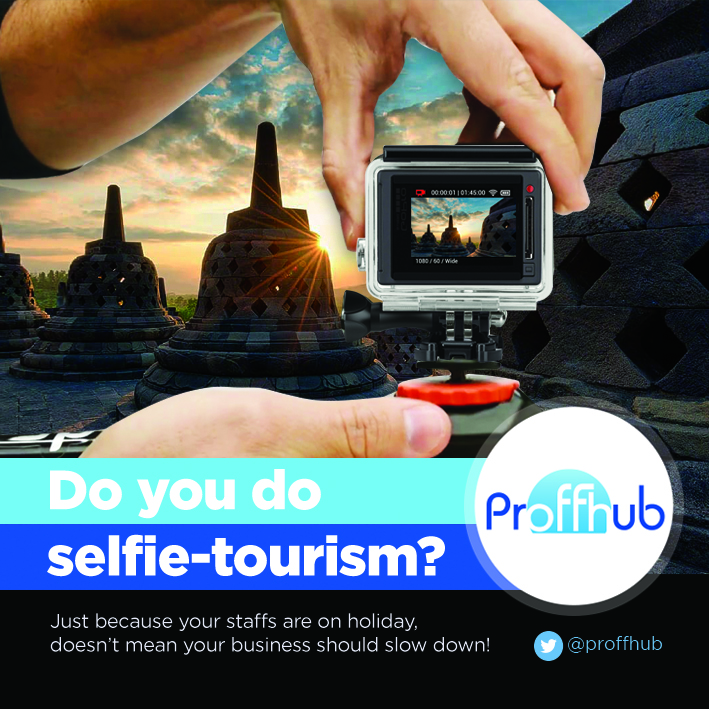
In Indonesia, tourism is an important component of the Indonesian economy the industry has been steadily growing with 13% growth in 2018 (higher than the average of the tourism growth in ASEAN regions). The income from a foreign tourist in Indonesia as per 2017 was around USD 16.8 billion and is estimated to reach USD 20 billion in 2018.
What is the profile?
According to the report published by the Ministry of Tourism in Indonesia in 2017, the domestic and the foreign tourist had different characteristics, as follows:
- Domestic Tourists have an equal split between males and females. Younger tourist (below 34 years) is slightly higher in number compared with the older one (above 35 years). They mostly come from Java (60%) and travel within Java islands itself.
- Foreign Tourists mostly coming from Asia Pacific (Malaysia, Chinese and Singapore). In 2016, the average length of stay was 8-9 days.
When?
- Peak seasons
- Christmas and New Year holiday: the rate of transportation and hotel can be increased by up to 250%, especially in a popular travel destination.
- Domestic school holiday when some e-commerce gives an extra discount for transportation and hotel (June or July), public holidays (Eid, Chinese New Year and long weekend).
- Foreign summer holiday: In August months, Bali and Lombok are popular destinations for foreign tourists for the summer holidays. Transportation and hotel rates are usually increasing 30%-50% from the normal price.
- Low season is generally during the rainy seasons, between October and April, except for Christmas and New Year holidays. However, the low season in Bali is different and it is from mid-January to the end of May and then around early September until mid-December.
Where?
According to the guidebook of Exit Passenger Survey published by the Ministry of Tourism in Indonesia, the tourist destinations in Indonesia are categorized into several categories based on the type of activities in that area:
- Maritime tourism that includes all activities related to beach or seaside area, such as cruising, sailing, fishing, surfing, diving or snorkeling. The most famous maritime spots are Bali and Lombok. On top of those places, there are also Bunaken (North Sulawesi), Kepulauan Seribu (DKI Jakarta) and Raja Ampat (Papua).
- Eco-tourism is related to nature and also the empowerment of the community around the tourist destination area. The famous tourist destinations are Kawah Ijen (East Java), Rubiah Island (Aceh), Tangkahan Eco-tourism (North Sumatra), Tourism Village Tembi (Yogyakarta) and Komodo Island (Nusa Tenggara Timur).
- Adventure tourism includes all adventurous activities, such as hiking, mount climbing, camping, and rafting. The famous places are located in the mountain, such as Rinjani Mountain (Lombok), Semeru Mountain (East Java) and Jaya Mountain (Papua).
- History/religious tourism is related to religious activities, including pilgrimage or pray, and/or related to all activities visiting and exploring historical places, such as museum, cultural heritage or prehistoric site. Destinations for religious such as Istiqlal Mosque (Jakarta), Pura Tanah Lot (Bali), Maha Vihara Mojopahit (Mojokerto) and Maria Laudres Cave (Kediri). While tourist destinations for history tourism are Candi Borobudur (Central Java), Kota Tua (Jakarta), Taman Sari (Yogyakarta), Kokas Prehistoric Site (Papua) and Rotterdam Fort (South Sulawesi).
- Art tourism includes all activities related to art, for example, theatre performance, traditional music, carnival, and traditional ceremony. The main tourist destinations for art in Indonesia are Jember Fashion Carnival (East Java), Taman Budaya (Yogyakarta) and Kasada Ceremony in Bromo Mountain (East Java).
- Culinary tourism. Based on Booking.com’s Taste of Travel survey, 73% of domestic tourists has planned for a culinary tour on their holiday trip. Tasting the delicacies of their holiday destination is considered as a must to enjoy the trip even more. There are many popular cities for culinary tourism, for example, Bandung, Makassar, Padang, Surabaya, and Palembang.
- Cities and villages tourism. Tourists can visit family and relatives, do shopping, enjoy night-life entertainment, live in a traditional village, involve in a philanthropist and corporate social responsibility activity, do photography and architectural visit. The tourist destinations for city tourism are big cities like Jakarta, Bandung, and Surabaya. Meanwhile, for village tourism, it is visited during the Eid holiday, when people are going back to their hometown. There are also some villages that specifically developed to be a tourism destination, such as Wae Rebo (Nusa Tenggara Timur), Penglipuran (Bali) and Baduy (Banten).
- MICE tourism involved Meeting, Incentives, Conference and Exhibition, including the business forum, exhibition, and concert. In 2019, the Indonesia government plan to promote MICE tourism by promoting 16 cities as MICE tourism in Indonesia, which are Jakarta, Surabaya, Bali, Medan, Lombok, Bandung, Balikpapan, Bintan, Batam, Semarang, Yogyakarta, Makassar, Padang, Manado, and Palembang.
- Sport/health tourism. Indonesia has many tourist destination areas that suitable for sports activities like mountain biking and rock climbing, surfing and marathon run that often held in various cities in Indonesia. Health tourism is including activities related to health, such as health treatment and spa. Bali is already popular for its spa treatment.
- Integrated tourism covering some activities in one area, for example, eco-park, recreation, and outbound park, zoo, botanical garden, resort, amusement park, wedding and honeymoon package.
- Recently, selfie tourism is also becoming a trend in Indonesia. Many tourist destination areas offering beautiful or unique spots for the tourists to take a picture, or commonly called an Instagram-able spot. The examples such as The Lu Hu Garden (North Sumatra), Alive Museum (Jakarta), Batu Spectacular Night (East Java) and Dream Museum Zone (Bali).




